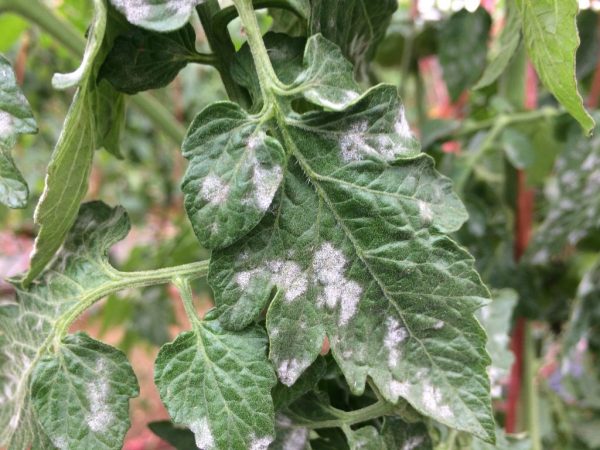Treatment of septoria in tomatoes
Septoria in tomatoes, or white spot, is common. The main causative agent of the disease is the fungus Sephtoria lycopersici. It is found in areas with high levels of air and soil moisture.

Treatment of septoria in tomatoes
Features of the disease
Damage to the leaves is considered the main symptom of the disease. They acquire a dark color and are completely saturated with moisture (watery blisters form on the surface of the leaves). After a few days, the size of such areas increases and reaches 5-7 cm in diameter. The leaves become brown with a black border, and the central part of the affected area becomes gray.
Tatiana Orlova (Candidate of Agricultural Sciences):
White spots are the accumulation of mycelium and spores of the parasite, with the help of which it spreads during the growing season. Later, in the fall, wintering bodies are formed on the same mycelium - rounded brown spots, visible to the naked eye.
If the disease affects the stem and petioles, the spots become not round, but oval. Small areas of fungal spores appear on them. As soon as the disease reaches its final stage, the entire leaf and stem begin to dry out. As a result, the leaves fall off, the bush completely dies.
Tatiana Orlova (Candidate of Agricultural Sciences):
The harmfulness of septoria disease depends on the time of occurrence. Most often, this disease manifests itself in the flowering phase - the beginning of fruiting in tomatoes. But under favorable conditions, it can also infect younger plants. In protected ground, especially in large greenhouse plants, where tomatoes are cultivated all year round, septoria blight can already be observed on seedlings. The younger the plant affected by this disease, the more dangerous the prognosis of the course.
Causes of the disease
Favorable factors for the onset of septoria are high levels of air humidity and hot weather. Such conditions favor the germination of spores on last year's plant debris. After that, they are spread with the help of the wind throughout the entire plot of the garden. The incubation period of the infection lasts for 1-2 weeks (it all depends on the weather). The maximum spread of tomato septoria is observed when it is windy or rainy outside.
Tatiana Orlova (Candidate of Agricultural Sciences):
The first spots of septoria are found on the lower leaves of the tomato, because the causative agent of the infection remains on the surface of the soil and plant debris. In protected ground, the fungus remains on the inner surface of cultivation structures.
Fighting the disease
If the plant has been affected by a fungal infection, it is necessary to immediately begin to fight it. For this, special chemicals are used. Better to give preference to fungicides "Revus" and "Thanos". They should be bred according to the instructions, depending on the number of tomato bushes. The optimal amount of revus is 0.5 l per 1 ha. "Thanos" needs to be applied about 600 g of the drug per 1 hectare.
Disease prevention

The disease can be prevented
It is much easier to worry about protection in advance than to waste your energy and time later on treating a tomato. When preparing planting material, it is important to carefully monitor the seeds. Choose only those that have been harvested from healthy tomatoes and unaffected garden plots. Before planting, it is important to treat the planting material with disinfecting drugs ("Oxyhom" or "Fitosporin"). After this procedure, the seeds are poured with water at a temperature of 60 ° C, and kept for about half an hour. The next step is rinsing. It is recommended to do this only in cool water, the temperature of which is 22-25 ° C.
The best option for preventing the disease is considered to be the correct choice of a planting variety. It is recommended to choose only those varieties that are characterized by high rates of resistance to fungal or viral infections.
Prevention of septoria on tomato consists of several basic steps.
- Immediately after harvesting, it is necessary to remove all the remains of the bushes, especially if the cultivation of tomatoes was carried out in a greenhouse, because under such conditions fungal infections begin to develop. It is better to deep plow the area.
- Tomatoes and other crops must be planted at a certain distance from each other to protect them from disease.
- Before planting a crop in a greenhouse, it is necessary to disinfect not only the planting material. Even the frames and the film that covers the greenhouse should be disinfected.
- If only 1 bush has undergone the disease, it is better to uproot it immediately and burn it away from the garden: this will reduce the risk of spreading septoria.
- Greenhouses should be ventilated daily to reduce humidity levels.
- If the disease is at stage 1, you can neutralize it with Bordeaux fluid.
Conclusion
To protect the crop from white spot, it is necessary to monitor the level of moisture in the soil and air. At the first signs of illness, control measures should be taken immediately. Delaying treatment will result in the death of the entire crop. In the future, it is forbidden to plant crops on this site, because the spores of the fungus remain in the soil for 2-3 years.


